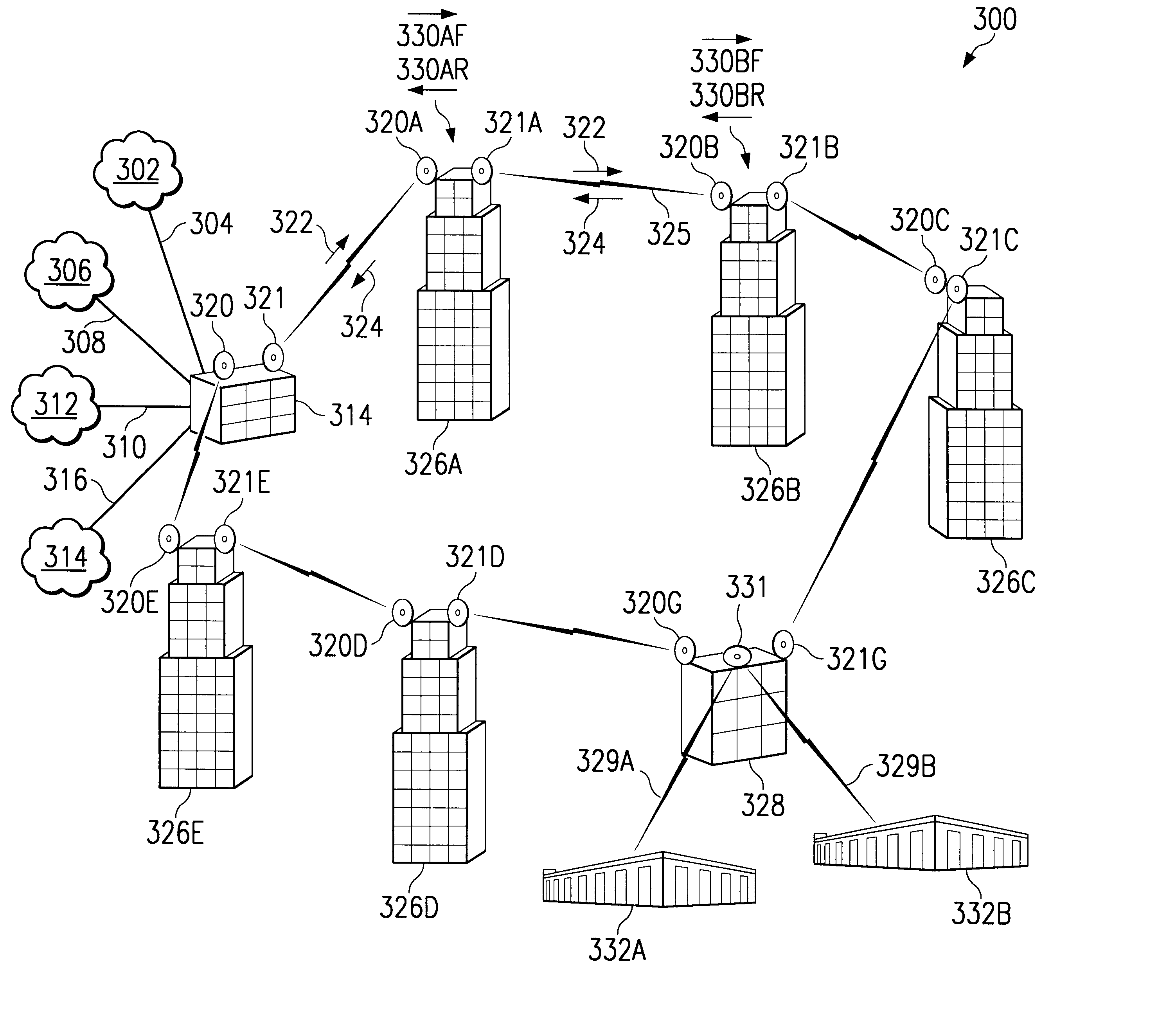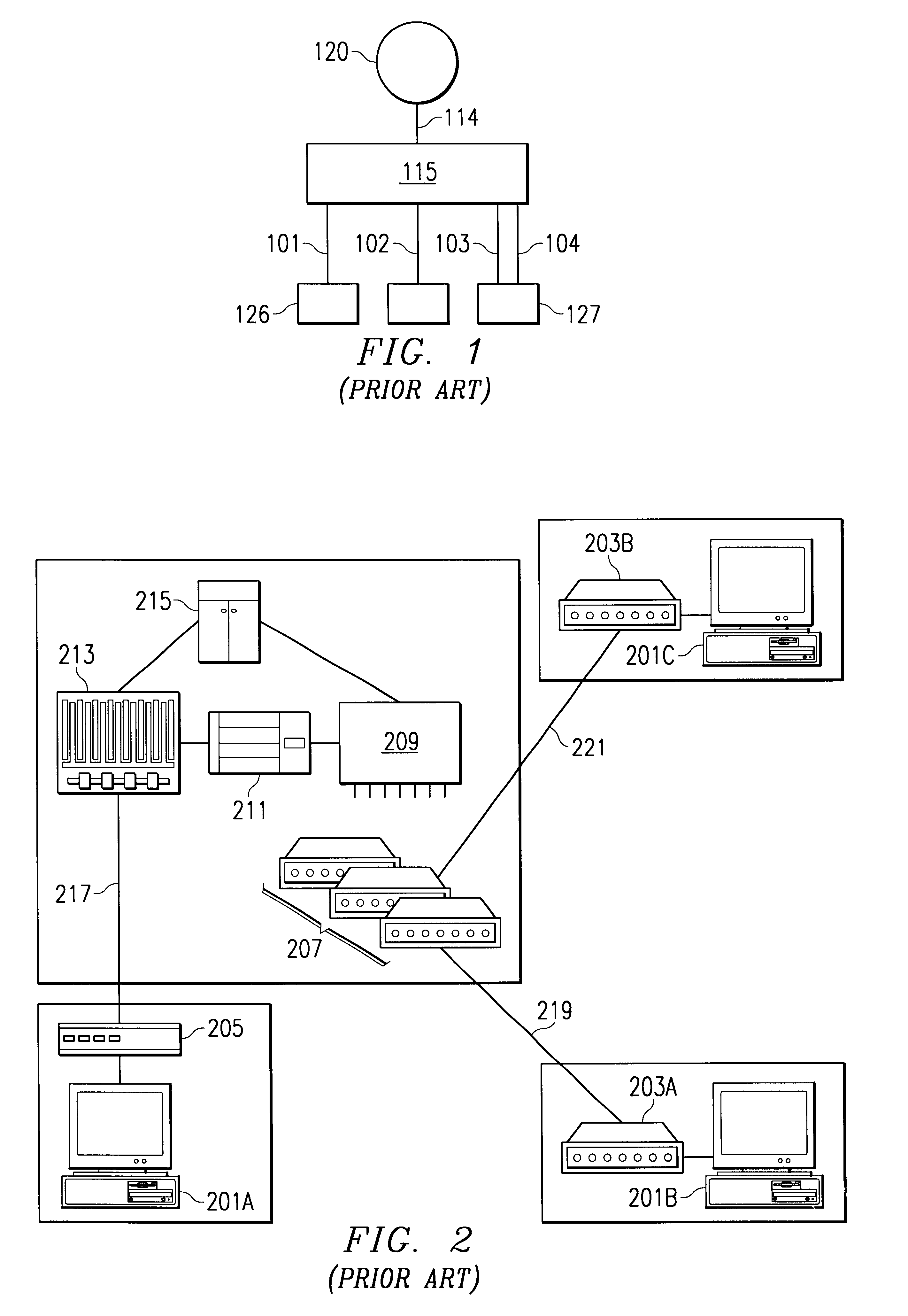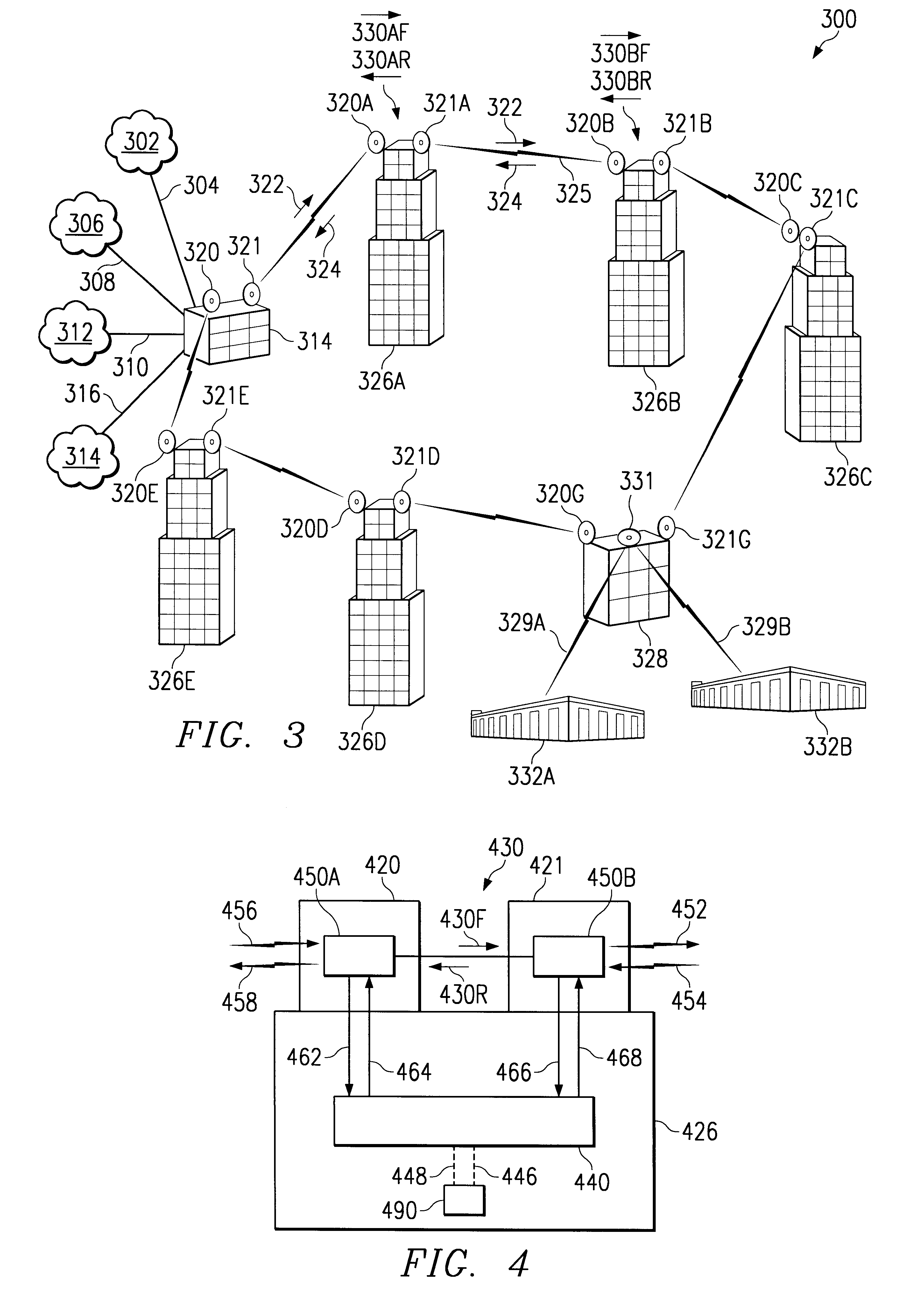Service tariffing based on usage indicators in a radio based network
a radio network and usage indicator technology, applied in the field of information communication networks, can solve the problems of large instantaneous bandwidth requirements surrounded by prolonged minimal or nominal bandwidth requirements, and significant amount of bandwidth remains unutilized, and achieves high efficiency
- Summary
- Abstract
- Description
- Claims
- Application Information
AI Technical Summary
Benefits of technology
Problems solved by technology
Method used
Image
Examples
Embodiment Construction
The present invention preferably employs a wireless network designed to deliver information, such as consistent with the typical telephony and data services, from a service provider, such as an ISP (Internet service provider) or LEC (local exchange carrier), and / or as between subscriber systems to metropolitan commercial subscriber locations. Preferred embodiments of such a network are shown and described in the above referenced patent application entitled "COMMERCIAL NETWORK TOPOLOGIES UTILIZING POINT TO POINT RADIOS."
Preferably, the network of the present invention incorporates system components necessary to connect a subscriber's application equipment (e.g., phones, private branch exchanges (PBXs), computers, etc.) to the service provider's equipment, (e.g., central office (CO) switch, Tandem switch, POP gateway, ISP server, etc.) or other subscriber's system equipment (e.g., phones, PBXs, computers, etc.). Accordingly, all the various functional tasks at the component level may ...
PUM
 Login to View More
Login to View More Abstract
Description
Claims
Application Information
 Login to View More
Login to View More - R&D
- Intellectual Property
- Life Sciences
- Materials
- Tech Scout
- Unparalleled Data Quality
- Higher Quality Content
- 60% Fewer Hallucinations
Browse by: Latest US Patents, China's latest patents, Technical Efficacy Thesaurus, Application Domain, Technology Topic, Popular Technical Reports.
© 2025 PatSnap. All rights reserved.Legal|Privacy policy|Modern Slavery Act Transparency Statement|Sitemap|About US| Contact US: help@patsnap.com



